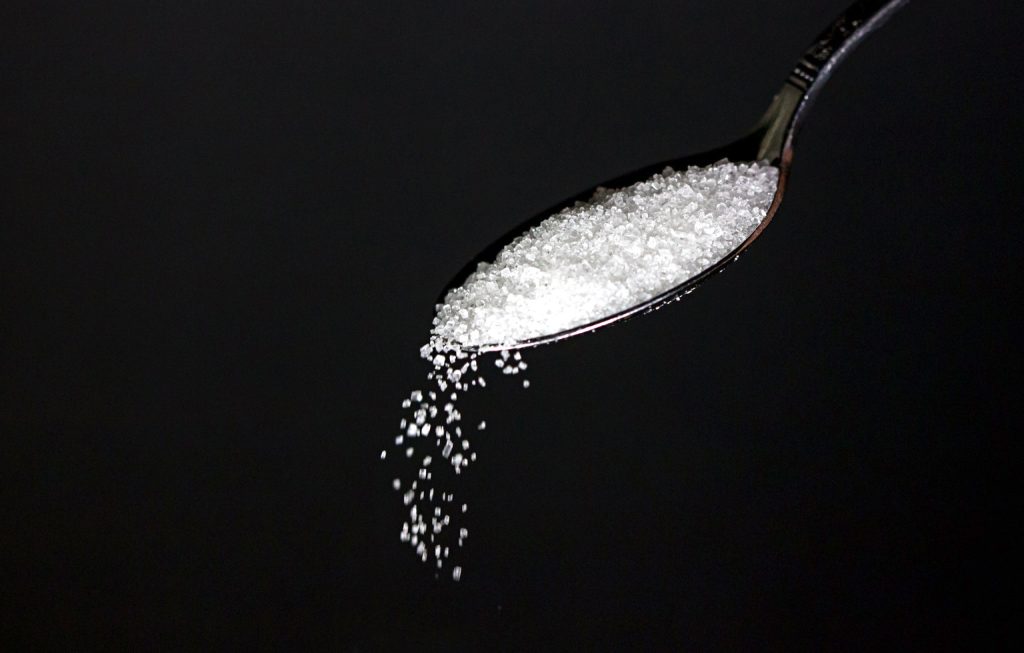The Most Commonly Used White Drug

The phrase “sugar and spice and everything nice” comes from a rhyme whose origin has been lost in the mists of time. Little did the original author suspect that sugar would also someday come to be known as “the most commonly used white drug” — another phrase whose author is apparently untraceable.
But, does sugar qualify as a drug? That debate is ongoing. Let’s put it this way: Can people become addicted to sugar? Because if they can, then logic requires that it must be a drug, one of the many substances capable of causing a substance addiction. One rank down from formal logic is good old common sense, the kind that says “If it looks like a duck, walks like a duck, quacks like a duck…” And for all practical purposes, sugar certainly does look, walk, and quack like a drug.
But let’s start with the definition from the 5th and latest edition of the Diagnostic and Statistical Manual of Mental Disorders, the medical profession’s Bible for describing various illnesses and defining exactly who suffers from them. Having an addiction is the same as having a severe Substance Use Disorder, and according to the Addiction Policy Forum, severity is calibrated thusly:
Two or three symptoms indicate a mild substance use disorder; four or five symptoms indicate a moderate substance use disorder, and six or more symptoms indicate a severe substance use disorder.
The possible symptoms are handily sorted into four categories, beginning with Impaired Control. If a person is using more of a substance than they intended to, or more often than they intended to, both of those conditions qualify. If a person wants to reduce their use of the substance or stop it altogether, but can’t — obviously, impaired control. And there is no need for a research grant, to know that millions of people are unable to reduce or end their use of sugar. Impaired control? Check!
Risky Use means using in risky settings and “continued use despite known problems.” As for the first, well, we’re not talking about anything as dramatic as hanging out in a broken-down crack house that might be raided at any moment. But a case could be made that for some people at some times (like children, for instance, enmeshed in the fabled Sugar High) a certain amount of danger certainly obtains. That second condition is undoubtedly the case for millions of people all over the globe because with sugar there is, for everyone, always the risk of developing diabetes or other serious physical problems.
“Having withdrawal symptoms when a substance isn’t used” is arguable. There are parents who will attest that a child who is denied a sugar fix is certainly capable of behavior that resembles withdrawal. Tolerance, or “needing more of the substance to get the same effect” does seem to be a factor for some users — particularly in the rare (but not rare enough) case of the person who stays in one place and continues to eat until they weigh 600 or 800 pounds. For people in this condition, there does not seem to be such a thing as enough, of anything, ever.
Addicted persons may be guilty of neglecting responsibilities and relationships, and of inability to take care of their tasks at home, school, or work, and of “giving up activities they used to care about because of their substance use.” That last accusation is certainly true of those who formerly loved baseball or dancing or another physical activity that has been conquered by their love for sugar.
Then, there is the type of social problem that overlaps with the Risky Use category. It goes without saying that thousands of children have nicked thousands of candy bars from stores. Not only children, but grownups have stolen and lied and engaged in other reprehensible behavior to get their hands on sweets. We know this thanks to the brave souls who have told their stories as part of their healing process.
All things considered, it seems that a strong case could be made for labeling sugar as an addictive substance.
Written by Pat Hartman. First published January 12, 2024.
Source:
“DSM-5 Criteria for Addiction Simplified,” AddictionPolicy.org, October 19, 2022.
Image Copyright: Gunilla G/CC BY-SA 2.0 DEED





1 COMMENTS